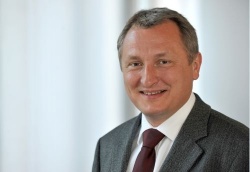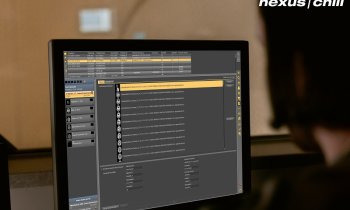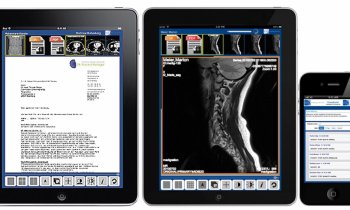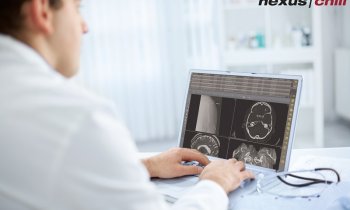Radiology services: In or out?
Daniela Zimmermann reports
How does a hospital decide what to do about in-house radiology if, for example, its consultant retires? Select a ‘new broom’ to brush out earlier practices, or make this an opportunity to redefine its radiology department’s services and objectives? In the latter case, outsourcing to receive diagnoses from an external radiologist might be potentially interesting. However, Dr Winfried Lessmann, one of the founders and current director of the Radiology Network Rheinland prefers a novel way of ‘in-sourcing’.

‘Thirteen out of 20 locations within our RNR group, working in radiology and radiotherapy, are directly linked to a hospital,’ explained Dr Winfried Lessmann, whose Radiology Network Rheinland (RNR) concept is unique in Germany. The Network covers in-patient as well as out-patient care, which consists of private patients as well as those whose treatment is covered by statutory medical insurance.
Basically, the business model aims to optimise efficiency and therefore cost effectiveness in radiology within an entire hospital. ‘Restructuring radiology often means investing in a new range of equipment and introducing new procedures. Often there money, know-how and space are lacking for both of these,’ she pointed out. ‘Therefore, taking over a department often happens when a new construction or an extension is carried out. For example, currently our biggest customer is the Leverkusen Hospital, where we took over radiology services in 2007. We moved the nuclear medicine department into the main building on the campus. Moreover, we established a type of radiotherapy that previously had not been available on-site.’
The situation at the Dreifaltigkeits Hospital, in Wesseling, was totally different. Radiology care was in the hands of surgeons and internists – a situation that, from a professional point of view, was not a problem for conventional radiology, but certainly was for CT and MRI examinations because these could not be carried out during the day by using teleradiology diagnoses. Such examinations need the on-site presence of a radiologist – a dilemma that was resolved by partly taking over the radiology department including the staff, and by linking up with an external radiological practice with CT and MRI facilities.
‘The key competence of a hospital is in-patient care. Our key competence is radiological care. And, a well functioning radiology department can result in cost savings of around €5 million a year – simply due to shorter in-patient stays for those who sometimes have to wait for an examination for two or three days. We contractually assure our customers that we will carry out a certain contingent of examinations within 24 hours. Moreover, the radiological diagnosis is available within two hours – a further advantage,’ Dr Lessmann emphasised.
The 800 staff in the RNR Network ensure a structured workflow and quality standards are guaranteed. A further pivotal point is the Network’s service centre; this deals with, administers and controls around 40,000 patient calls a month. The staff at this Leverkusen centre is medically trained and also knows the various locations. So, if, for example, a patient calls from Remscheid, he is automatically connected with the staff member responsible for radiology in Remscheid, so that each RNR patient feels ‘at home’.
Winfried Lessmann is particularly proud of that service: ‘The concept allows us to keep the appointment lines in our surgeries up to 95% free of unnecessary calls. A further advantage of central control is that we have an overview of substitute and alternative options. Instead of giving patients only one rigid appointment time, we can offer them a more timely examination in another surgery or hospital.’
The service centre not only coordinates out-patient appointments but also in-patient examination appointments. In the service team consists of specially trained hospital schedulers, who are directly connected to the hospital and radiology information systems (HIS and RIS) and can ensure the best possible use of equipment capacities – including a reminder function for hospital transport.
Technology
Next to staff know-how, said Dr Lessmann, technology plays a decisive role. ‘Of course we always try to be ahead regarding technology and the introduction of new procedures to surgeries and hospitals to benefit patients. Mammography is one such development. Having introduced full-field digital mammography at a very early stage, we were among the first to use the tomosynthesis procedure. Currently, we are introducing the automated breast volume scanner ultrasound procedure, which scans the breast via an ultrasound detector, evaluates data, stores them and therefore makes them reproducible.’
The human aspect
‘The training of young doctors and medical staff and therefore the quality of care for our patients is so important to us that we have founded our own RNR Academy,’ Dr Lessmann pointed out. ‘Additionally, the standardisation and centralisation of processes that results from the Network structure is of great benefit to patients, because we can spend our time with them rather than dealing with administrative tasks.’
03.11.2010











